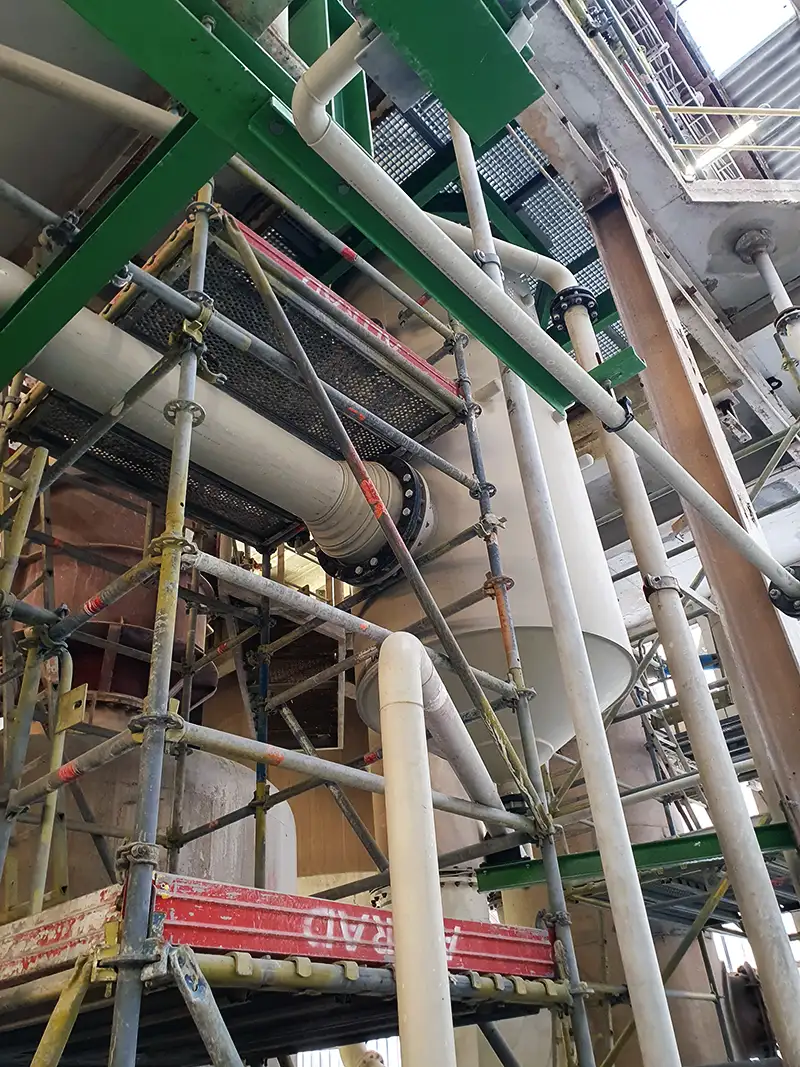Efficient droplet removal from a gas flow
 A knockout drum is used to remove liquid droplets from a process gas stream. This is achieved by decreasing the gas velocity that as a consequence the gas expands, and the physical properties change. Ultimately, the dew point of the process gas is higher, where condensation takes place, and the liquid droplets will precipitate or will be eliminated by a droplet separator.
A knockout drum is used to remove liquid droplets from a process gas stream. This is achieved by decreasing the gas velocity that as a consequence the gas expands, and the physical properties change. Ultimately, the dew point of the process gas is higher, where condensation takes place, and the liquid droplets will precipitate or will be eliminated by a droplet separator.
For what are the drums used?
Knock-out drums are mainly used in gas flows with a large liquid load and can be fabricated in horizontal and vertical versions. Knock-out drums are used mainly for waste gas headers or at the entry of chimneys.
Horizontal knockout drums.
Horizontally executed knockout drums are constructed with one gas entry, one gas exit and one liquid discharge. The gas is expanded by a substantial increase in the volume. The reclining arrangement (due to large bottom surface and therefore low liquid level) it is necessary to place a level measurement to monitor the liquid level in the vessel.
Vertical knockout drums.
In vertically executed knockout drums, the gas velocity is decreased suddenly after the inlet by increasing the surface area. This precipitates the liquid droplets from the gas. The released liquid droplets fall down and are collected at the bottom while the liquid is regularly discharged. The higher liquid level in a vertical construction (due to small bottom surface) is often sufficient to apply gooseneck with a sufficiently large liquid column so that it can withstand the pressure in the system.
Applications.
One of the main applications of knock-out drums is to prevent contamination of the underlying process and to prevent drift loss. To avoid entrainment of droplets, a vane type separator or a wire mesh demister can be used. A knock-out drum is generally quite easy to provide with an inspection hatch to check and/or clean the separator.
We design and deliver, tailor-made.
Ravebo can design and deliver the right solution for every application. Knock-out drums can be supplied with the following options:
- Construction to customer specification.
- Diverse materials; from plastic to corrosion-resistant metals.
- Automatic discharge.
- Level monitoring.
- Versions according to different (inter)national (printing) classes.
